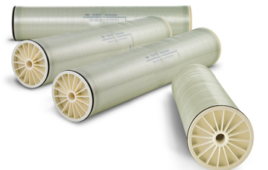Vats of blue-green algae could
one day replace oil wells in producing raw materials for the chemical industry,
a University of California, Davis chemist predicts.
Shota Atsumi, an assistant
professor of chemistry, is using “synthetic biology” to create cyanobacteria,
or blue-green algae, that convert carbon dioxide in the air into complex
hydrocarbons, all powered by sunlight.
Cyanobacteria are
single-celled organisms that, like green plants, can use sunlight to turn
carbon dioxide and water into sugars and other carbohydrates.
The U.S. Department of Energy
has set a goal of obtaining a quarter of industrial chemicals from biological
processes by 2025. Today 99% of the raw materials used to make paint, plastics,
fertilizers, pharmaceuticals, and other chemical products come from petroleum
or natural gas, says Atsumi.
While some chemicals, such as
biofuels, can be obtained from converted plant material, plants are relatively
slow to grow, and using farms to grow fuel takes arable land out of food
production.
Instead, Atsumi is engineering
cyanobacteria to make chemicals they do not make in nature. By carefully
analyzing genes in these and other organisms, his team will assemble artificial
synthetic pathways and put them into living cells.
“We can use genes as building
blocks to create these new functions,” Atsumi says.
The work is supported by a contract from
Asahi Kasei, a major Japanese chemical manufacturer.




